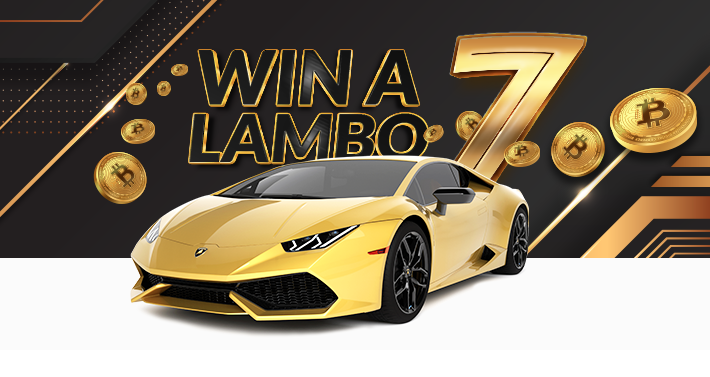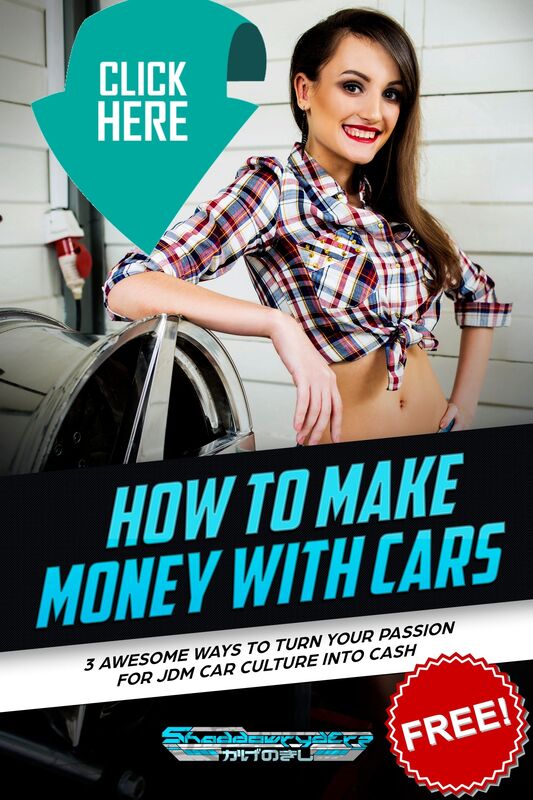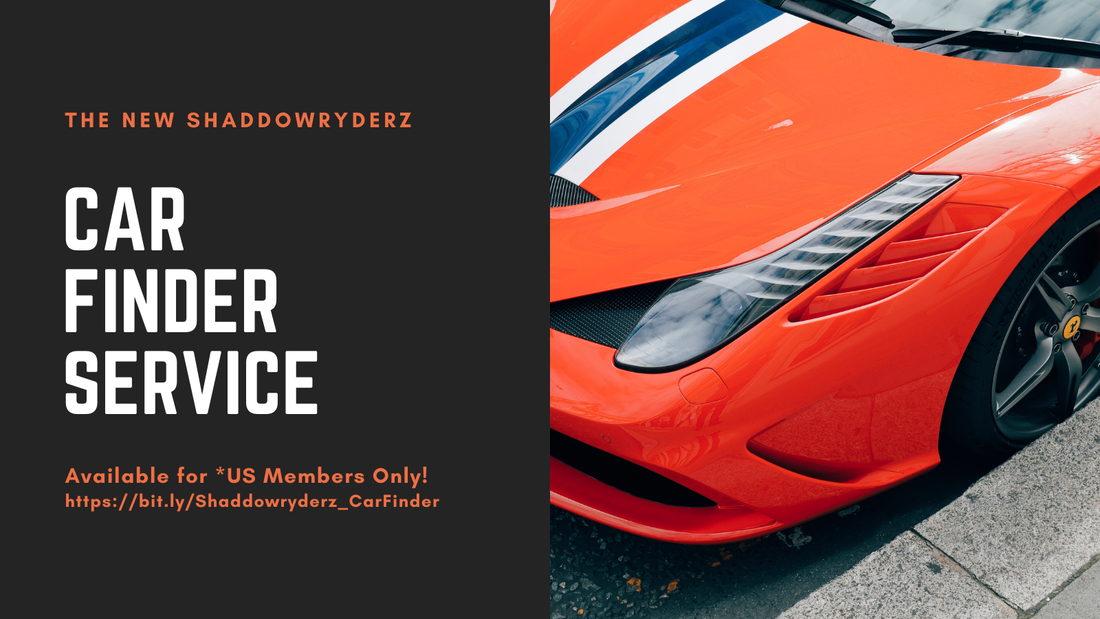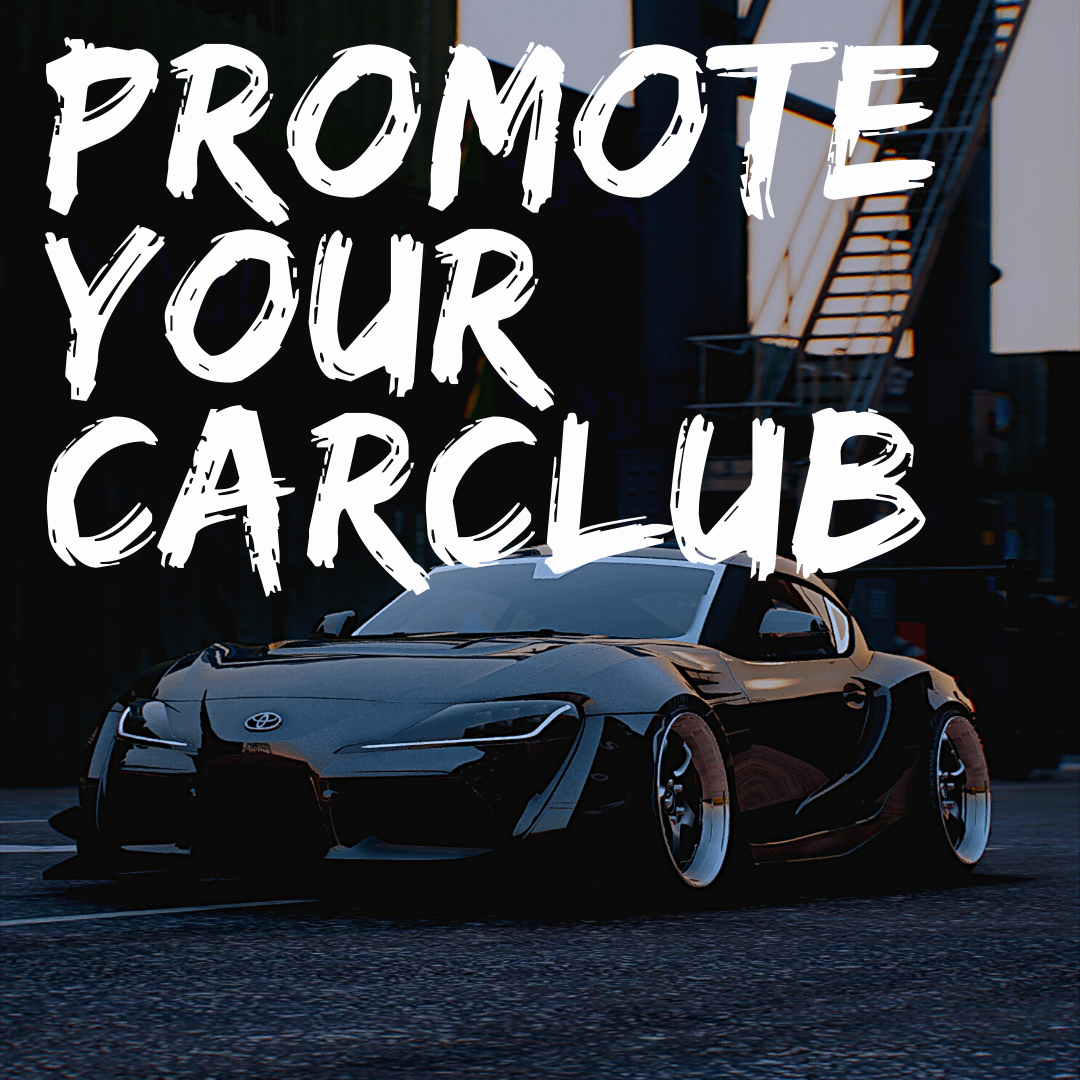|
Oh Yes! You heard it all right! Now it is official that a new Need For Speed installment is all geared up and is just on its way to blow your mind. And by the sneak-peaks of it, it can be consider that the Underground mentality is carried over from the past installments. Thus, it is still not sure if it will be called Underground 3 or maybe something else we can expect, but the bustle happening at night in the trailer, after a rainfall, it surely does make us remind the good old days of “undergrounding”. Whereas, EA has stated on the official site, that the game will be a reboot and restart of the series - a start from scratch, we can say. Undoubtedly, Underground and Underground 2 were perhaps the best games provided by the franchise and yet the developers will determine to use the signature label, then this awesome new game definitely has its work cut out for it. In the teaser, the fast-moving action prevents us to get a good look, but on the other hand, the video interpretation is stating that the game is “an action driving experience that unites the culture of speed”. This being said, therefore it might not be seems to include some kind of Japanese street culture along it. On the contrary, except the white Mustang, all the cars seen in the trailer have certain touches of JDM: , a KPGC-10 GT-R Skyline, Pink 180SX, a RWB green 964, and a FR-S, or GT86 (our call). Also the description states that “The new NFS game will be featuring deep customization, authentic urban car culture, a nocturnal open world, and an immersive narrative that pulls you through the game.” So isn’t it more fascinating?
Thus, this game will surely be carrying an authentic car-culture experience. And not to forget, the appearance of the police in the trailer depicts that this new game will be actually a little more fun and exciting than just keeling around a circuit. So this game is very much awaited and liked already! #NFS #JDM #NeedForSpeed #gaming #game #speed #cars #automobile
0 Comments
Oh Yes! You heard it all right! Now it is official that a new Need For Speed installment is all geared up and is just on its way to blow your mind. And by the sneak-peaks of it, it can be consider that the Underground mentality is carried over from the past installments.
Thus, it is still not sure if it will be called Underground 3 or maybe something else we can expect, but the bustle happening at night in the trailer, after a rainfall, it surely does make us remind the good old days of “undergrounding”.
Whereas, EA has stated on the official site, that the game will be a reboot and restart of the series - a start from scratch, we can say. Undoubtedly, Underground and Underground 2 were perhaps the best games provided by the franchise and yet the developers will determine to use the signature label, then this awesome new game definitely has its work cut out for it.
In the teaser, the fast-moving action prevents us to get a good look, but on the other hand, the video interpretation is stating that the game is “an action driving experience that unites the culture of speed”. This being said, therefore it might not be seems to include some kind of Japanese street culture along it. On the contrary, except the white Mustang, all the cars seen in the trailer have certain touches of JDM: , a KPGC-10 GT-R Skyline, Pink 180SX, a RWB green 964, and a FR-S, or GT86 (our call).
Also the description states that “The new NFS game will be featuring deep customization, authentic urban car culture, a nocturnal open world, and an immersive narrative that pulls you through the game.” So isn’t it more fascinating?
Thus, this game will surely be carrying an authentic car-culture experience. And not to forget, the appearance of the police in the trailer depicts that this new game will be actually a little more fun and exciting than just keeling around a circuit. So this game is very much awaited and liked already!
#NFS #JDM #NeedForSpeed #gaming #game #speed #cars #automobile Learn the basics of Japanese import auto vehicles and what makes Jdm car shows different from the and rest. Become a pro at spotting the best local, city, state, and international jdm car shows, motor shows, meets, and events to attend. Table of Contents
History of JDM Car Shows
In the late 1970s and early 1980s, front wheel-drive vehicles, mostly early smaller Hondas, Toyotas, Nissans and Mazdas gained popularity in Southern California. To be more precise, within the city of "Gardena" at a parking lot for then what was called "Meiji Market or Meiji Market Plaza" along with a line of other authentic Japanese retailers serving the largely Japanese communities of Gardena, Torrance, and Palos Verdes was to become the " 1st known and established Weekend late-night meet-up location." The Young Asian-Americans and first generation "Issei" Japanese street racers from Japan and Okinawa played a particularly important role in the development of the early street racing scene. Many enthusiasts in southern California centered around the City of Gardena also began to modify their compact Japanese cars, following similar trends that originated in Japan, such as the paint schemes, modified exhausts, and engine carburation. As the Import racers and car aesthetics grew in popularity and numbers, so did the competition. Meiji Market's parking lot became very well known outside the original Japanese car crews and this attracted more outsiders to visit, as well as American Car race Crews to appear, which inevitably became somewhat problematic. This local Import Racers scene became a hotbed for pink slip racing and more aggressive tension between race crews. Non-Japanese automobile racers & car clubs started to appear from far outside the Gardena, Torrance, & South Bay communities and in approx. circa 1983-86 Import racers and midnight racers started to meet at another local restaurant called "Naugles," which was located on Western Ave & and 186th street. Naugles was the "1st obvious step" that import racing was now gaining popularity in other Southern California communities. Street Import racing venues and street meet-up locations in nearby cities such as Carson, Ca. and Long Beach, Ca. eventually arose from the original Meiji Market Location, and then came huge drag racing events at Palmdale, California often packed in over 10,000 spectators per day. Racers like Stephan Papadakis, Ed Bergenholtz, Myles Bautista and Eric Sebastian[1] on the East Coast, dominated the first import drag racing circuit IDRC also called Battle of the Imports in the mid 1990s. Show car clubs became a huge factor within the import scene: Southern California had Team Macross 7, Team Outkast, Team Kosoku, Northern California had SVP, Sinister Racing, Team Flipspeed in the East Coast (New Jersey, Toronto). Hawaii had Midnight Racing and Alpha Project, while the East Coast had the still-active Jade Crew. A very notable pioneer of the JDM Car show scene is Ken Miyoshi, the DJ and nightclub promoter had created Import Showoff and beamed at its success. More than a car show, it was the premier gathering place for new-generation Asian Americans—DJs, skaters, rappers and anyone else who wanted to be seen. "It became an outlet for Asians, a place for them to show off their appeal," Miyoshi now says. "'If you want to prove your skills on the turntables, go ahead. If you think you're pretty and want to pose next to cars, go ahead. If you think you're the best dance crew and want to show off, go ahead!" Nearly two decades later, Miyoshi looks at a photograph of his legendary race car splashed on the cover of an old Turbo Magazine, one he dug out of a dusty cardboard box at a Rancho Dominguez storage unit filled with memories of past events. He glances at the headline in bold block letters: "CR-Xcel: Wicked Power, Wild Looks." Glossed onto the hood of the car is the show's yellow-diamond logo with the motto "The first. The original. The finest. Showoff: Since 1994." It's a declaration he still clings to. Now 40 and living in Huntington Beach, Miyoshi is the godfather of the import-car-show scene, a Southern California-bred subculture that has sped into the mainstream, spawning films such as the Fast and Furious franchise, the import modeling industry (as depicted in the reality web series Roll Models), a crop of tuning companies and a car-show formula that is still followed today. He's in the driver's seat once again. Compton, early 1990s. Around midnight on Friday and Saturday nights, they'd congregate on Maria Street, a seemingly endless strip of asphalt sandwiched between vacant industrial buildings. Nearly 600 cars from Little Saigon to South Bay to the San Gabriel Valley would roll in with amber lights and tinted windows tattooed with logo decals, ready to hurtle down the makeshift track at heart-stopping rates. Some guys raced for wagers, others for bragging rights. All did it for the love of speed. Corolla GTSs against Mazda RX-7s. Toyota MR2s battling Nissan 300ZXs. Two vehicles at a time. Machine vs. machine. From the starting line, they'd zoom into the darkness, their tires squealing and engines buzzing like angry locusts, leaving behind a puff of exhaust and a hollering crowd. Young men have been transfixed with tweaking and tuning cars since the days of American Graffiti. And Southern California has long served as the mecca of wheels, its open roads symbolizing a pathway to freedom, sex and glory. But the Asian American guys living in middle-class suburbia never yearned for Chevys and Mustangs or the "bajito y suavecito" lowrider cruisers built by Mexican-Americans in East Los Angeles barrios. Instead, they were souping up Japanese imports—Honda Civics, Acura Integras and Toyota Supras. There was something alluring about the economy sport coupes, once scoffed at by industry professionals as roller skates with engines. They were blank canvases spilling with potential. As one enthusiast on online car forum FT86Club.com wrote, "It was the underdog that the under-the-radar enthusiast would buy because they knew the car had the potential to beat out the supercars at a fraction of the price." In the early 1990s, the scene accelerated with guys who lived and breathed for their road machines, foregoing prom, parties and sometimes food so they'd have more cash for upgrades. (Miyoshi says he knew of people who only went to college so they could get a loan and use the money to buy more parts.) For many young men, some who had been caught up with drugs and gangs, the passion offered a sense of purpose and, for the first time, an identity. "It gave the Asian American community credibility and something to brag about," says Eddie Kim, founder and owner of Dynamic Autosports in Santa Ana. "Every culture had its thing—blacks, Hispanics—yet we were always stereotyped as nerds or sushi chefs. Finally, there was an industry where we were the leaders. Other guys looked to us as role models and wanted to get our approval. They'd ask, 'Should I buy this? Is it cool to do this?' It was a turning point." Kim's shop, which originated in Irvine, was one of the first in Southern California to specialize in aftermarket products for import cars (parts that don't come from the original factory), which previously could only be special-ordered from Japan. Guys from Los Angeles and beyond could stop in to pick up Neuspeed Race springs, GReddy BL exhaust systems, adjustable cam gears and short shifters while, at the same time, have their cars lowered to the ground. Miyoshi was one of the die-hards, hanging out in garages when he wasn't in class at Cypress College or deejaying events. On Saturday nights, he worked as a promoter for nightclubs such as Variety Arts Center in downtown Los Angeles. Standing in the cool air on the balcony amidst cocktail-fueled flirtations and cigarette smoke, he noticed something happening down in the parking lot. Guys would roll up in their spotless, tuned-up cars and rev their engines until the crowds in line turned their heads. Then they would drive away and return at the end of the night, just as partiers spilled out the doors. That's when he got the idea to put it all under one roof—the guys, the cars, the girls, the swagger. He tossed the concept around with the guys on his car team, who simply shook their heads. "They were like, 'Wait a minute, Ken. So you're gonna charge guys to park their cars inside a building, and then you're gonna charge their friends and their friends' friends to pay to go look at their cars? It's not gonna happen.'" He decided to put down a deposit at the Los Angeles County Fairplex in Pomona, but getting approval for the event was more challenging than he expected. A couple of years earlier, a gang brawl erupted at a lowrider car show there that left one dead and several injured. "Right when I said, 'fixed-up cars,' they shut me down," Miyoshi recalls. Around the same time, young Asian American men with fixed-up sports cars were being targeted by authorities, particularly in Orange County. According to Dan Tsang, a UC Irvine radio-show host, Fountain Valley police kept a "mug book" filled with names and Polaroids of those whom they suspected of being gang members or "gang associates." Anyone who wore baggy clothes or had a car decked with flashy stickers, clear headlights and other modifications was seen as a threat. "They called it 'vigorous law enforcement,'" Tsang says. Miyoshi finally got the go-ahead for his event after agreeing to rent metal detectors and let officials prescreen each car submitted. He had about four months to get everything together. For help with promoting the event, he turned to his buddies at Cypress College, a ragtag group of DJs, former gang members and car fanatics who'd often ditch class to play Pusoy Dos, or Filipino Poker, in a spot on campus they called "the pit." He photographed their cars to feature on fliers that he handed out at clubs and placed on cars at a popular drag race called Battle of the Imports in Palmdale. A flood of completed applications arrived in the mail. "I would look at the entries and be like, 'Whoa, this is nice,'" he says. "These were the cars I wanted. I knew I was onto something." In March 1995, about 3,500 people and 220 cars showed up for the big event. For car fans, it was the first chance to see the vehicles up close—really see them, rather than watching them pass by on a dark street. Non Fujita's gunmetal RX-7. RJ de Vera's white Integra. An iconic silver Veilside Supra. "It was like going to a museum and seeing everyone's masterpieces," says Ron Bergenholtz, whose '91 Acura Integra was put on display. "You'd walk around and say, 'Oh, I like how he did his headlights.' It was very much like looking at art." Dazed and exhausted, Miyoshi stumbled up to the skybox to take a breath, gazing at the cars and crowd down below. "That was the most amazing feeling," he says. "I felt like a pyromaniac at a bonfire." After it was all over, he was so overwhelmed that he locked himself in his room for three days to decompress. His mom handed him food through the door. Finally, his friends started calling. "So when's the next one?" they'd ask. Import Showoff snowballed to other locations—Del Mar, Anaheim, Northern California, Chicago, Houston, New Jersey, Honolulu and Vancouver. Every event was more epic than the last, as Miyoshi constantly added more diversions. Skateboarders did ollies on halfpipes, hip-hop crews battled for trophies (UC Irvine's Kaba Modern consistently reigned), and women in neon bikinis strutted across runways in the Miss Showoff pageant. Some shows brought out 14,000 spectators and attracted performers such as Black Eyed Peas, Warren G and Ice T. Because of the success, the Specialty Equipment Market Association (SEMA), the aftermarket industry's organization, starting taking notice of Japanese parts and vehicles. Import Tuner Magazine would later call Miyoshi one of the "legends in the game," writing that he "took a hobby, and without knowing it, changed the way America saw Japanese cars, resculpting the automotive aftermarket landscape forever." Though it wasn't long before Miyoshi started facing competitors—or, as he calls them, "carbon copies." Other import-car shows entered the scene, most notably, Hot Import Nights (HIN) based in Newport Beach. Founded in 1998, HIN was massive, fusing cars, electronic music, videogames and go-go dancers with big-name sponsors such as XM Satelite Radio, Hanes and Rockstar energy drinks. Hundreds of thousands of attendees would flock to sites such as Verizon Wireless Amphitheater in Irvine. HIN representatives gave Miyoshi a proposition. He recalls the conversation: "We met at P.F. Chang's at the Irvine Spectrum, where they sat me down and said, 'We're getting a lot of momentum. We'd like to buy you out, or, if you refuse, we're gonna take you up.' It was the most insulting thing that's ever been said to me." Miyoshi describes how he sees his event compared with HIN. "It's like if you were to compare soft drinks [such as] Coca-Cola and Mountain Dew," he says. "When you see a Mountain Dew commercial, it's guys with a motorcycle jumping off things and doing crazy stuff, while Coca-Cola is the classic. It doesn't need to be flashy. It's the original. Nobody can take away from the original." Foot traffic at Import Showoff eventually started dwindling. The core group of fans began graduating from college, entering the 9-to-5 world and starting families, while more car shows popped up across the country. "It was just so saturated," Miyoshi says. "People were like, 'I don't need to go to this car show because there's one next month anyway.'" He had to come up with a new idea. At the time, he'd been traveling back and forth to Japan. While there, he encountered guys who'd drive out to the open ports or mountains and drift, putting their cars into slides. "I call it automotive ice skating," Miyoshi says. "You're trying to lose control without losing control. You're standing on the guardrails, and cars going 70 mph will come inches away from you. It's crazy." Back home, while there were guys who would drift illegally on Mulholland Drive in the Santa Monica mountains, Miyoshi wanted to turn the motor sport into a real competition. He connected with pro drivers in Japan and brought them over for an event he called Drift Showoff at the Irwindale Speedway. It would be a major departure from Import Showoff, a pure automotive competition. "No booty-shaking, no nothing," Miyoshi says. That first event in 2003, Miyoshi says, was "mind-blowing." "At first, there was a small line, and then as the competition went on, you could see people calling their friends, saying, 'Hey, you gotta come to Irwindale. You gotta come to Irwindale.' Pretty soon, there was an hour-and-a-half wait to get in." Falken Tire Corp. signed on as the title sponsor. "Everyone said it would be the next NASCAR," Miyoshi says. Different Kinds of Jdm Car Shows There are Japanese Classic Car Shows which focus on vintage Japanese cars that were icons in there time. Import Car Shows - one very famous one is Hot Import Nights For the past couple of decades, Hot Import Nights (HIN) has provided a nightclub atmosphere and serious work-of-art builds from all shores, competing “concours-style” in 10-25 categories for cash, prizes and notoriety. this case a growing, $multi-billion industry in E-Liquid Vaporizers. With a large promotional thrust for the hardware and flavored liquids at shows like this and clubs, e-cigarettes have already begun to outpace traditional cigarette smokers in the under-30 seThat does not, however, limit the age groups that attend. Because of the 18-year-old to twenty-something hotties walking around promoting a sponsor or shilling pin-up posters, HIN is an attraction to raving fans with blazing cameras. Best times to Catch a JDM Car Show The absolute best time to catch a JDM Car Show is in the summer! There are so many great opportunities to catch JDM Car Shows during the summertime due to the great warm whether. You will see more outdoor events happen during this time. The girls are dressing less and the guys are shining up their cars to shine bright in the summer sun. You can catch JDM Car Shows popping up all over the world in the summertime. Now, you can still find plenty of JDM Car Shows in the winter, fall and spring season, but they tend to be indoors which can be limiting. JDM motor shows Of all the major auto shows around the world, the Tokyo Motor Show is perhaps the one that features the most imaginative and whimsical automotive designs. For once, it seems, designers are allowed to let their hair down and publicly showcase some outrageous machines (most just design exercises some are actually functional) that would probably best be categorized under Road & Track's now-extinct "Not Quite Cars" heading. JDM Auto Shows One of My favorite is TAS ( Tokyo Auto Salon ) The Tokyo Auto Salon was not always the huge event it has become today. In fact, back in 1983 when a Japanese tuning magazine named Option started the event, it was simply referred to as the “Tokyo Exciting Car Show.” In 1987, the name was changed to the current Tokyo Auto Salon. In the early days of TAS, it was only Japan’s custom car builders and tuners who gathered to show off their work. Today however, alongside some of the same custom car builders and tuners are new custom builders, parts manufacturers, accessory companies, RC carmakers, clothing companies, tire manufacturers, and much more. The explosive growth of the event has even brought out Japan’s conservative car manufacturers like Nissan, Toyota, Honda, Lexus, Subaru and Mazda. Even mini “Kei” car companies like Suzuki and Daihatsu all have prominent displays that feature not only their latest vehicles and technologies, but of course beautiful models and race queens with smiles showing off their own “goods” as well. TAS has certainly morphed into the kind of event that anyone in any car related industry simply cannot ignore. JDM Car Meets These are more like underground car show meet ups. These events are very laid back and requires no qualifications to attend (as a spectator or participant) – just simply show up. Japanese Vehicles Found at JDM Car Shows Typically you will find Hondas, Toyotas, Mazdas, Nissans, Subarus, and Mitsubishis and JDM Car Shows. Some iconic cars that are near and dear to my heart are the Honda NSX, the Nissan Skyline, the Mazda RX-7 FD, the Mitsubishi Lancer Evolution, the Toyota Supra, and the Subaru Impreza WRX. There are tons of other notable cars like the Honda Civic that you will find all over the place. Lately you find Scion wagons, and mini cars at JDM Car Shows and even scooters. It’s all part of the awesome culture. Atlanta JDM Auto Shows Some really good Atlanta JDM Auto Shows you should check out are:
Dallas JDM Car Shows Some really good Dallas JDM Car Shows you should check out are:
Las Vegas JDM Car Shows Some really good Las Vegas JDM Car Shows you should check out are:
Florida JDM Car Shows Some really good Florida JDM Car Shows you should check out are:
LA JDM Car Shows Some really good LA JDM Car Shows you should check out are:
Sources: https://en.wikipedia.org/wiki/Import_scene http://www.ocweekly.com/2013-08-15/culture/ken-miyoshi-import-car-showoff/full/ http://www.drivingline.com/articles/the-import-car-show-is-alive-and-kicking-with-hot-import-nights/ http://www.roadandtrack.com/car-shows/tokyo-auto-show/news/g6471/best-of-tokyo-motor-show/ http://www.revvedmag.com/event-coverage/car-shows/tokyo-auto-salon-the-ultimate-jdm-experience/ http://shifthype.com/the-death-of-the-car-show-how-we-helped-kill-it/ |
GuidesHow to Get The Most Out of Your JDM Car Show Experience JDM ListsJDM Product ReviewsGov-Auctions org Review Categories
All
Archives
March 2023
|
Photos from State Farm, Javier Alfaro Fotografía, State Farm, Antoine de Cardaillac, Javier Alfaro Fotografía, JLaw45, andreboeni, andreboeni, QuoteInspector.com, JLaw45, Arturo Hurtado, dave_7, Moto@Club4AG, kangur_design, gaborlengyel, keimthedesigner, Antoine de Cardaillac, WillVision Photography, andreboeni, State Farm, QuoteInspector.com, andreboeni, Javier Alfaro Fotografía, dave_7, QuoteInspector.com, Rutger van der Maar, andreboeni, Arturo Hurtado, State Farm, dave_7, zanthrax-dot-nl, andreboeni, Antoine de Cardaillac, Hugo-90, Arturo Hurtado, andreboeni, QuoteInspector.com, mattbuck4950, QuoteInspector.com, Samee55, andreboeni, Antoine de Cardaillac, Javier Alfaro Fotografía, andreboeni, Arturo Hurtado, State Farm, fotupia, Javier Alfaro Fotografía, Lav Ulv, Antoine de Cardaillac, State Farm, Arturo Hurtado, M.T. El Bialy, Rutger van der Maar, justinc04, wuestenigel, Falcon_33, Ya, saya inBaliTimur, Javier Alfaro Fotografía, M.T. El Bialy, JiBs., JLaw45, QuoteInspector.com, Onroaders, QuoteInspector.com, free pictures of money, Antoine de Cardaillac, dave_7, DIYAutoGalaxy, topmotors, kangur_design, andreboeni, andreboeni, Javier Alfaro Fotografía, hang_in_there, M.T. El Bialy, igotphotos, ae_works, andreboeni, Ricky Flores, andreboeni, QuoteInspector.com, JLaw45, dave_7, Samee55, Free For Commercial Use (FFC), Arturo Hurtado, Antoine de Cardaillac, Antoine de Cardaillac, QuoteInspector.com, Javier Alfaro Fotografía, State Farm, QuoteInspector.com, Arturo Hurtado, andreboeni, Ian Gulinao, Javier Alfaro Fotografía, dave_7, rylovelace, 060sportcars, JLaw45, dave_7, Arturo Hurtado, Antoine de Cardaillac, QuoteInspector.com, andreboeni, andreboeni, Antoine de Cardaillac, Arturo Hurtado, Antoine de Cardaillac, ae_works, andreboeni, Antoine de Cardaillac, Jonathan Leung / artofstance.com, Antoine de Cardaillac, Rutger van der Maar, JLaw45, Antoine de Cardaillac, andreboeni, Javier Alfaro Fotografía, andreboeni, free pictures of money, andreboeni, andreboeni, QuoteInspector.com, ae_works, Javier Alfaro Fotografía, M.T. El Bialy, Javier Alfaro Fotografía, Javier Alfaro Fotografía, andreboeni, iamazeyou, gaborlengyel, free pictures of money, Ben Baligad, Rutger van der Maar, dave_7, Antoine de Cardaillac, Adrian Kot, State Farm, 060sportcars, QuoteInspector.com, Arturo Hurtado, Javier Alfaro Fotografía, Javier Alfaro Fotografía, Javier Alfaro Fotografía, Rutger van der Maar, free pictures of money, Rutger van der Maar, suendercafe, free pictures of money, Antoine de Cardaillac, QuoteInspector.com, QuoteInspector.com, QuoteInspector.com, M.T. El Bialy, QuoteInspector.com, andreboeni, Javier Alfaro Fotografía, andreboeni, andreboeni, Arturo Hurtado, andreboeni, Mervtography, Jones028, UnknownNet Photography, Javier Alfaro Fotografía, Adrian Kot, kangur_design, Arturo Hurtado, CaenAbel, JLaw45, QuoteInspector.com, Ivan Radic, dave_7, M.T. El Bialy, State Farm, andreboeni, Javier Alfaro Fotografía, enanon, Leap Kye, topten5, andreboeni, andreboeni, dave_7, Antoine de Cardaillac, Adrian Kot, JLaw45, Eric Tessmer, Honolulu Hawaii, Antoine de Cardaillac, State Farm, RL GNZLZ, Javier Alfaro Fotografía, Mervtography, dave_7, Antoine de Cardaillac, QuoteInspector.com, andreboeni, State Farm, Arturo Hurtado, free pictures of money, Arturo Hurtado, M.T. El Bialy, andreboeni, Javier Alfaro Fotografía, Crown Star Images, Arturo Hurtado, andreboeni, Seabird NZ, wuestenigel, Arturo Hurtado, SimpleFX, JLaw45, M.T. El Bialy, Javier Alfaro Fotografía, M.T. El Bialy, Arturo Hurtado, dave_7, JLaw45, Antoine de Cardaillac, Free For Commercial Use (FFC), Lav Ulv, Javier Alfaro Fotografía, QuoteInspector.com, andreboeni, QuoteInspector.com, Hugo-90, QuoteInspector.com, Rutger van der Maar, 060sportcars, Arturo Hurtado, eschipul, focusonmore.com (CC BY 2.0), theflamers, e³°°°, free pictures of money, orange_advan, suendercafe, andreboeni, Arturo Hurtado, andreboeni, Javier Alfaro Fotografía, Ricky Flores, Javier Alfaro Fotografía, JLaw45, andreboeni, QuoteInspector.com, Arturo Hurtado, Chris Yarzab, Antoine de Cardaillac, daveoflogic, gaborlengyel, andreboeni, Crown Star Images, Arturo Hurtado, JLaw45, Javier Alfaro Fotografía, OiMax, State Farm, State Farm, andreboeni, andreboeni, andreboeni, Hugo-90, 060sportcars, State Farm, Antoine de Cardaillac, andreboeni, JLaw45, gaborlengyel, Antoine de Cardaillac, Infrogmation, Arturo Hurtado, MarlonBu, Lars Plougmann, xiquinhosilva, Arian Zwegers, trophygeek, eschipul, Global Jet, L.Vincenti, locationsite, Arturo Hurtado, SchuminWeb, JLaw45, Ninara31, Francisco Anzola, Paul David Lujan, dave_7, davidwilson1949, Sammy/B, Ron Cogswell, dmerino13, andreboeni, QuoteInspector.com, foundin_a_attic, Jonathan Leung / artofstance.com, Official U.S. Navy Imagery, focusonmore.com, Melia Skinner, Arun Pillay, Arturo Hurtado, tiffany98101, alh1, KRWonders






 RSS Feed
RSS Feed
